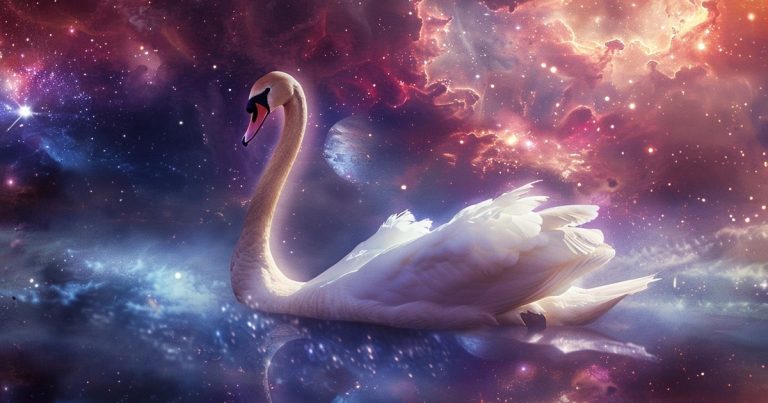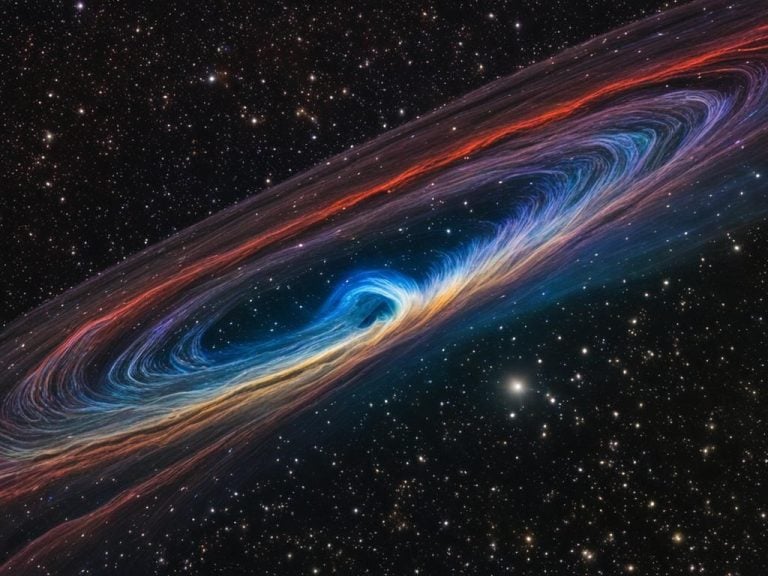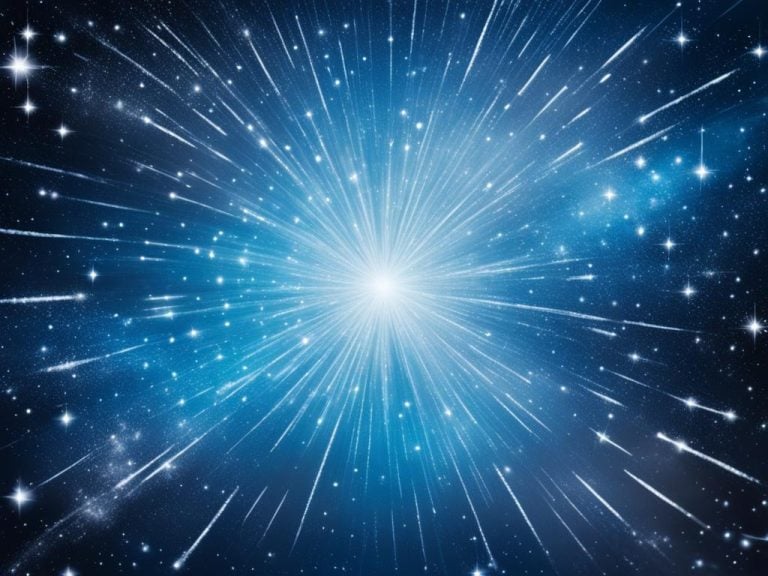Explore the Marvels of Cygnus Constellation
Modified: August 20, 2024 Author: International Star Registry
Did you know the Cygnus constellation is the 16th largest in the night sky? It covers 804 square degrees in the sky. This region in the Northern Hemisphere is full of stars, nebulas, and open clusters. Its shape looks like a swan or a northern cross, which has amazed people for ages.
Key Takeaways:
- The Cygnus constellation is the 16th largest constellation in the night sky.
- Cygnus features a unique pattern resembling a swan or a northern cross.
- It is home to a variety of celestial wonders, including stars, nebulas, and open clusters.
- Cygnus is known for its prominent stars, such as Deneb and Sadr.
- The constellation is also home to deep-sky objects like the North America Nebula and the Veil Nebula.
Are you a fan of stargazing or curious about the universe’s mysteries? Let’s explore the Cygnus constellation together. With amazing stars and deep-sky objects, this region is a must-see for anyone who loves astronomy.

Before diving into Cygnus’ wonders, let’s understand the constellation. To learn more, you can check out Wikipedia, Celestron, and ThoughtCo.
The Northern Cross of Cygnus
The constellation Cygnus, known as the Northern Cross, amazes anyone who looks up. It shows a big cross pattern in the sky. This pattern is made by stars like Deneb, Albireo, and Gamma Cygni (Sadr).
The Northern Cross in Cygnus is easy to spot, even if you’re not an expert. Its shape and bright stars make it popular with people who love the stars. It’s a good place to start when looking at the night sky.
The Northern Cross is like a door to the whole Cygnus constellation. By following the lines between its stars, you can find more interesting things in Cygnus. For example, you might see the lovely star Albireo or the famous North America Nebula.
For centuries, people have found stories and wonder in the Cygnus constellation. Many cultures have tales about it. Its place in the north sky has always pulled people’s imaginations.
in Cygnus can be a special gift for someone you love. International Star Registry lets you do this. It’s a way to celebrate a special moment or show your love lasts forever. To find out more, visit International Star Registry website.
Celestial Wonders in Cygnus
In the Cygnus Constellation, there’s a lot to see. You can find many amazing sights and learn about the universe. These wonders will make you want to learn and see more.
The North America Nebula (NGC 7000) in Cygnus is a top sight. It looks like North America, full of rich reds and swirls. These colors come from tons of hydrogen, lit up by new stars forming nearby.
The Veil Nebula is also in Cygnus. It shows us what’s left after a big explosion long ago. This nebula has three parts and looks beautiful. It’s a favorite for both photo lovers and star watchers.
Traveling through Cygnus lets us see amazing things. The North America Nebula and Veil Nebula are just the start. Keep looking, and you’ll find more beauty and wonder in the stars.
Notable Stars in Cygnus
Cygnus is a big constellation in the night sky. It’s the 16th largest and captures everyone’s attention. There are several bright stars in Cygnus that make it beautiful.
Deneb
Deneb, also known as Alpha Cygni, is one of the brightest. It’s the 19th brightest in the sky. Despite being over 2,500 light-years away, it shines brightly. Deneb is larger and much brighter than our sun, making it an amazing sight.
Albireo
Albireo is a special star in the Northern Cross. It’s actually two stars, one orange and one blue-green. This pair, about 380 light-years from us, is fascinating to look at.
Sadr
Sadr, at the center of the Northern Cross, is known as Gamma Cygni. It’s a big, yellowish star that lights up Cygnus. Sadr is between 1,500 and 2,000 light-years away, but it shines so bright.
If you’re into stars, check out Cygnus and its cool stars. Visit this guide or the AstroBackyard site. Check out a full star list on Wikipedia.
Deep-Sky Objects in Cygnus
The Cygnus constellation is famous for its many deep-sky objects. It’s a wonderful spot for both astronomers and stargazers. Cygnus has 90 objects in its Messier, New General Catalogue (NGC), and Index Catalogue (IC) lists. These include a diverse variety of night sky wonders.
One special object in Cygnus is Messier 29, found near the bright Sadr star. It’s an open cluster made of many small stars. Messier 29 looks beautiful in the night sky, making it a joy to see.
Another standout is Messier 39. This open cluster has stars that are spread out. You can see Messier 39 with just your eyes on clear, dark nights. But it really shines when you look at it through a telescope.
The North American Nebula, or NGC 7000, is also in Cygnus. It looks like the continent of North America and is a huge nebula. Seeing it is an incredible experience, stretching across the night sky.

If you want to see more deep-sky objects in Cygnus, there are many resources to help. TheSkyLive has a lot of details about these objects. Unistellar offers great tips for observing objects in Cygnus. EarthSky talks about Cygnus, the Swan, and its links to the Milky Way.
References:
- TheSkyLive – Cygnus Deep-Sky Objects
- Unistellar – Observing Celestial Objects in Cygnus the
- EarthSky – Cygnus the Swan – In the Milky
Mythology and Significance of Cygnus
Cygnus is known as the celestial swan in the night sky. For ages, it has fascinated people, finding itself in numerous tales. These stories have made it a key part of human history, adding mystery to its glow.
In tales from ancient Greece, Cygnus plays a special role. It’s connected to a story about Zeus, king of the gods. In this myth, Zeus turned into a swan to win over the lovely Queen Leda. This led to the birth of Helen of Troy and her siblings. Cygnus shows a hidden side of Zeus, wrapped in wonder and enchantment.
Western stories also find inspiration in Cygnus. They tell of Phaethon, trying to prove his divine lineage by driving the sun chariot. The ride went wrong, causing disasters everywhere. Zeus had to stop this by striking Phaethon with a thunderbolt. Cygnus, a close friend of Phaethon, changed into a swan out of sorrow. The stars immortalize the lesson of overreaching ambition.
These tales deepen our bond with the night sky. They are key to how we’ve seen our place in the vast universe over the years. Stories about Cygnus highlight the lasting value of storytelling. They show how this constellation still inspires us today.
Cygnus and International Star Registry
Are you amazed by the Cygnus constellation? Want to make your mark in the night sky? International Star Registry is your go-to. It names stars in Cygnus, letting you give a unique gift to loved ones.
Why stick to usual gifts when you can own a star? A star name is perfect for birthdays, anniversaries, or graduations. It’s a special, long-lasting way to show you care.
Naming a star here means more than you might think. You’re creating a lasting connection with the universe. Picture this: a name you choose shining bright in the night, honoring someone you love.

International Star Registry is the real deal. They’ve been naming stars since 1979, earning a world-class reputation.
It’s more than a gift; naming a star is an unforgettable experience. Give the gift of stardom. Let your loved ones cherish their own star in the sky.
This constellation is a favorite among celebrities. Some celebrities that have their very own stars named in Cygnus include Gearge W Bush, Princess Diana, Kelly Clarkson, Jim Parsons, Judy Garland, and Joni Mitchell.
Observing Cygnus in the Night Sky
The Cygnus constellation is a top pick for those who love the night sky. It’s visible all summer in the Northern Hemisphere. This constellation, shaped like a swan, captures the eye of everyone, from beginners to experts.
Look northeast in the summer nights to find Cygnus. As the sky darkens, it moves high above us, looking like a grand swan. Its shape and bright stars make it easy to find in the dark.
Cygnus is not just any collection of stars. It’s home to impressive sights like Cygnus X-1, a dynamic black hole. This black hole spins fast and holds the weight of 20 Suns, making it an amazing object to study.
One of Cygnus’s stars, Albireo, shines as two stars, one golden and one blue, through a telescope. Nearby, you’ll also see the beautiful Cygnus Loop. This ring of gas is a reminder of a dead star, shining dimly in the sky.
If you like exploring star groups and gas clouds, Cygnus won’t disappoint. Messier 29, a reddish open cluster, is a key feature. And you can’t miss the grand nebulae like the North America, Tulip, Pelican, and Cocoon Nebulae in this constellation.
Cygnus is not just a scientific gem. It also has deep historical and mythical ties. Ptolemy included it among the first 48 constellations centuries ago. Today, it’s still one of the most important in the sky.
In essence, looking at Cygnus is a thrilling journey. Whether for its bright stars, deep-sky wonders, or ancient stories, Cygnus amazes. So, next time you do some stargazing in the North, remember to look out for this celestial wonder.
References:
- NASA’s Jet Propulsion Laboratory – Explore the Cygnus
- Sky at Night Magazine – A Guide to the Cygnus
- The Sky Live – Cygnus Constellation
Conclusion
The Cygnus constellation is an amazing journey through the night sky. It shows the Northern Cross and has many stars to see. Exploring this area lets you see how big and beautiful our universe is.
Both astronomers and those new to star gazing can enjoy exploring Cygnus. Its nebulae and deep-sky objects are stunning. They spark curiosity about the universe beyond our Earth.
As you travel through Cygnus, think about what the night sky means. It shows us how small we are in the universe. The universe is full of amazing chances. So, use your telescope or look at the stars, and enjoy the beauty of Cygnus.
If you want to remember your journey, think about International Star Registry. They can help you buy a star in Cygnus for a special person or event. This gift from StarRegistry.com will always remind you of Cygnus.
FAQ
What is the Cygnus constellation?
The Cygnus constellation appears like a swan or a cross in the night sky. It is visible in the Northern Hemisphere. This part of the sky is full of stars, nebulas, and open clusters.
Why is the Cygnus constellation called the “Northern Cross”?
The Northern Cross name comes from Cygnus’ shape of bright stars. They look like a big cross. Stars Deneb, Albireo, and Gamma Cygni (Sadr) make this special pattern.
What are some of the celestial wonders in the Cygnus constellation?
The Cygnus constellation holds amazing sights. The North America Nebula looks like the continent from space. The Veil Nebula tells the story of a huge exploding star through its gas and dust.
Which are the notable stars in the Cygnus constellation?
Deneb, Albireo, and Gamma Cygni (Sadr) are some stars in Cygnus. Deneb shines the brightest as a supergiant. Albireo is a favorite among amateur star watchers for its colors. Sadr marks the heart of the Northern Cross.
What are some of the deep-sky objects in the Cygnus constellation?
Messier 29 and Messier 39 are open clusters you can see near Sadr. Cygnus’ North American Nebula is a massive region of glowing gas.
What is the mythology and significance of the Cygnus constellation?
Cygnus’ stars have inspired myths across cultures. In Greek myths, Zeus took the form of a swan. Western stories tell of Phaethon and Cygnus. Each tells of love, loss, and friendship.
Can I name a star in the Cygnus constellation?
Yes, International Star Registry lets you name a star in Cygnus. It’s a special gift for any occasion. It lets you keep a part of the sky close forever.
How can I observe the Cygnus constellation in the night sky?
In summer and fall, look to the northeast for Cygnus. It moves high in the sky, resembling a swan at its peak. Use a clear night, and if you can, a big telescope to see its details better.
Source Links
- Summer Constellation Spotlight: Cygnus | Celestron – https://www.celestron.com/blogs/knowledgebase/summer-constellation-spotlight-cygnus
- Explore the Wonders of the Cygnus Widefield! – https://www.touptekastro.com/blogs/works-sharing/explore-the-wonders-of-the-cygnus-widefield
- Cygnus (constellation) – https://en.wikipedia.org/wiki/Cygnus_(constellation)
